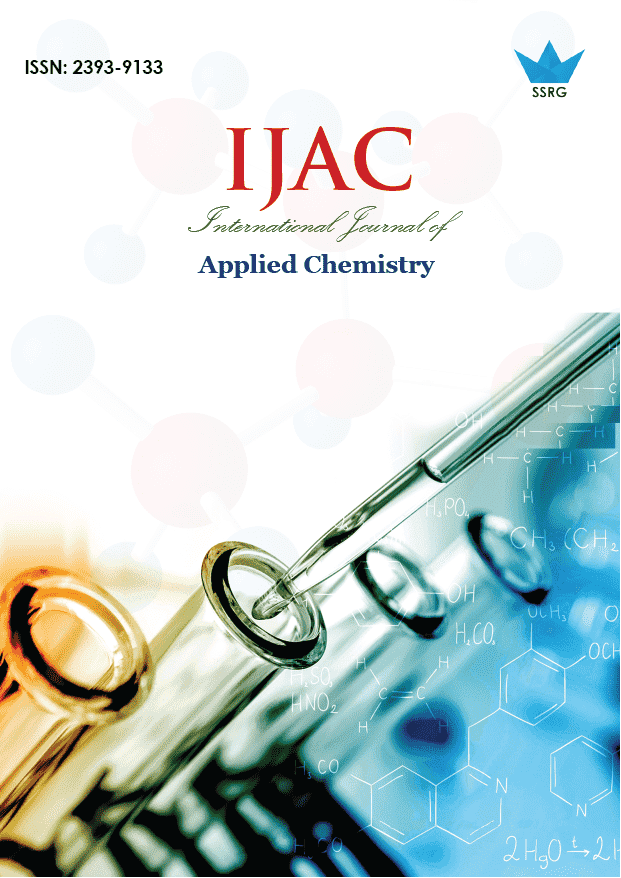Extraction of Natural Dyes from Common Kitchen Waste for Sustainable Dyeing Practices

| International Journal of Applied Chemistry |
| © 2025 by SSRG - IJAC Journal |
| Volume 12 Issue 2 |
| Year of Publication : 2025 |
| Authors : Thwishaa Johar |
How to Cite?
Thwishaa Johar, "Extraction of Natural Dyes from Common Kitchen Waste for Sustainable Dyeing Practices," SSRG International Journal of Applied Chemistry, vol. 12, no. 2, pp. 13-17, 2025. Crossref, https://doi.org/10.14445/23939133/IJAC-V12I2P103
Abstract:
The ecological footprint of artificial dyes in the textile manufacturing industry has resulted in an immediate quest for greener alternatives. This raises questions about whether natural dyes from everyday waste kitchen materials, in combination with natural mordants, are sustainable and efficient alternatives to artificial dyes for dyeing textiles. Natural dyes were extracted from red cabbage, onion skins, and orange peels in this research. These were mordanted onto cotton fibers, employing three mordanting procedures with both synthetic and natural mordants. It was shown in the study that these dyes, being highly concentrated with anthocyanins, flavonoids, and carotenoids, yielded a variety of intense colors. Pre-mordanting was found to consistently produce the strongest and most even coloration among the mordanting methods. Therefore, these results validate that kitchen waste can be an effective source of natural dyes, and organic mordants can be as efficient as synthetic ones, providing a sustainable option for green textile dyeing.
Keywords:
Kitchen wastes, Mordanting, Natural dyeing, Natural pigments, Sustainable dyeing.
References:
[1] Bruno Lellis et al., “Effects of Textile Dyes on Health and the Environment and Bioremediation Potential of Living Organisms,” Biotechnology Research and Innovation, vol. 3, no. 2, pp. 275-290, 2019.
[CrossRef] [Google Scholar] [Publisher Link]
[2] Padma S. Vankar, “Chemistry of Natural Dyes,” Resonance, vol. 5, no. 10, pp. 73-80, 2000.
[Google Scholar] [Publisher Link]
[3] D. Jothi, “Extraction of Natural Dyes from African Marigold Flowers (Tagetes Erecta L) for Textile Coloration,” Autex Research Journal, vol. 8, no. 2, pp. 49-53, 2008.
[Google Scholar] [Publisher Link]
[4] Sindra L. Summoogum-Utchanah, and Hashita Joyram, “An Investigation on the Potential of Extracting Natural Dyes from Beetroot and Turmeric,” International Journal of Research in Engineering and Technology, vol. 4, no. 2, pp. 401-416, 2015.
[CrossRef] [Google Scholar] [Publisher Link]
[5] Muhammad Khalid Saeed ed et al., “Isolation and Quantification of Anthocyanins from Red Cabbage (Brassica Oleracea L.) and Its Potential Uses as an Antioxidant in Natural Food,” ACTA Pharmaceutica Sciencia, vol. 62, no. 4, pp. 907-919, 2022.
[CrossRef] [Google Scholar] [Publisher Link]
[6] Usman Habu Taura et al., “Extraction and Characterisation of Natural Dye from Orange Peel for Textile Applications,” Journal of Applied Life Sciences and Environment, vol. 57, no. 1, pp. 169-181, 2024.
[CrossRef] [Google Scholar] [Publisher Link]
[7] Soon-Ei Bae, “A Study of Onion Skin Pigments in the Extracting Solvents and Residual Pigments After Dyeing the Textiles,” Journal of Fashion Business, vol. 13, no. 3, pp. 109-117, 2009.
[Google Scholar] [Publisher Link]
[8] Nattaya Punrattanasin et al., “Silk Fabric Dyeing with Natural Dye from Mangrove Bark (Rhizophora Apiculata Blume) Extract,” Industrial Crops and Products, vol. 49, pp. 122-129, 2013.
[CrossRef] [Google Scholar] [Publisher Link]
[9] Loum Janani, Lukyambuzi Hillary, and Kodi Phillips, “Mordanting Methods for Dyeing Cotton Fabrics with Dye from the Albizia Coriaria Plant Species,” International Journal of Scientific and Research Publications, vol. 4, no. 10, pp. 321-325, 2014.
[Google Scholar] [Publisher Link]
[10] M.Mónica Giusti, and Ronald E. Wrolstad, “Characterization and Measurement of Anthocyanins by UV–Visible Spectroscopy,” Current Protocols in Food Analytical Chemistry, pp. F1.2.1–F1.2.13, 2001.
[CrossRef] [Google Scholar] [Publisher Link]
[11] Florian C. Stintzing, and Reinhold Carle, “Functional Properties of Anthocyanins and Betalains in Plants, Food, and in Human Nutrition,” Trends in Food Science & Technology, vol. 15, no. 1, pp. 19-38, 2004.
[CrossRef] [Google Scholar] [Publisher Link]
[12] Ashis Kumar Samanta, and Adwaita Konar, “Dyeing of Textiles with Natural Dyes,” Natural Dyes, vol. 3, no. 30-56, 2011.
[Google Scholar] [Publisher Link]
[13] R. Siva, “Status of Natural Dyes and Dye-Yielding Plants in India,” Current Science, vol. 92, no. 7, pp. 916-925, 2007.
[Google Scholar] [Publisher Link]
[14] Aleksandra Ivanovska et al., “Sustainable Dyeing and Functionalization of Different Fibers Using Orange Peel Extract’s Antioxidants,” Antioxidants, vol. 11, no. 10, pp. 1-15, 2022.
[CrossRef] [Google Scholar] [Publisher Link]

 10.14445/23939133/IJAC-V12I2P103
10.14445/23939133/IJAC-V12I2P103